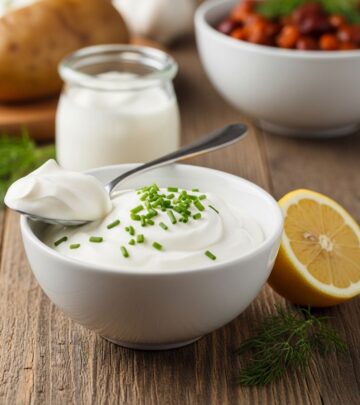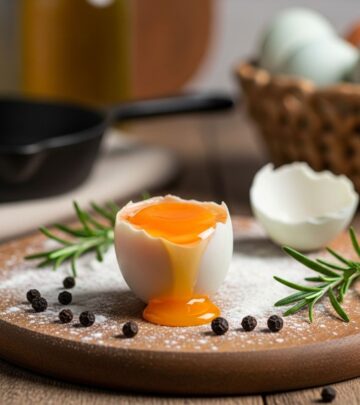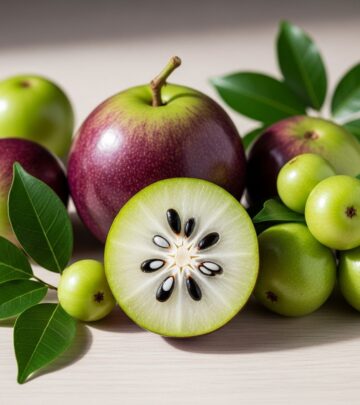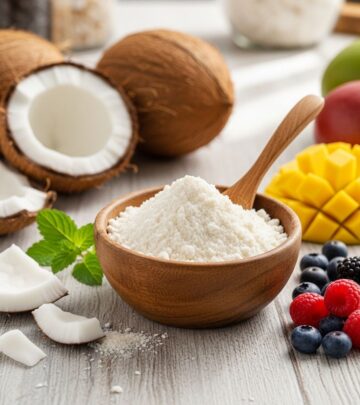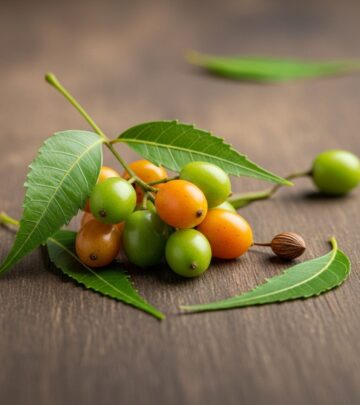Quince Fruit: Benefits, Nutritional Value, Uses, and More
A fragrant produce that transforms dishes with vibrant color, soothing digestion perks.
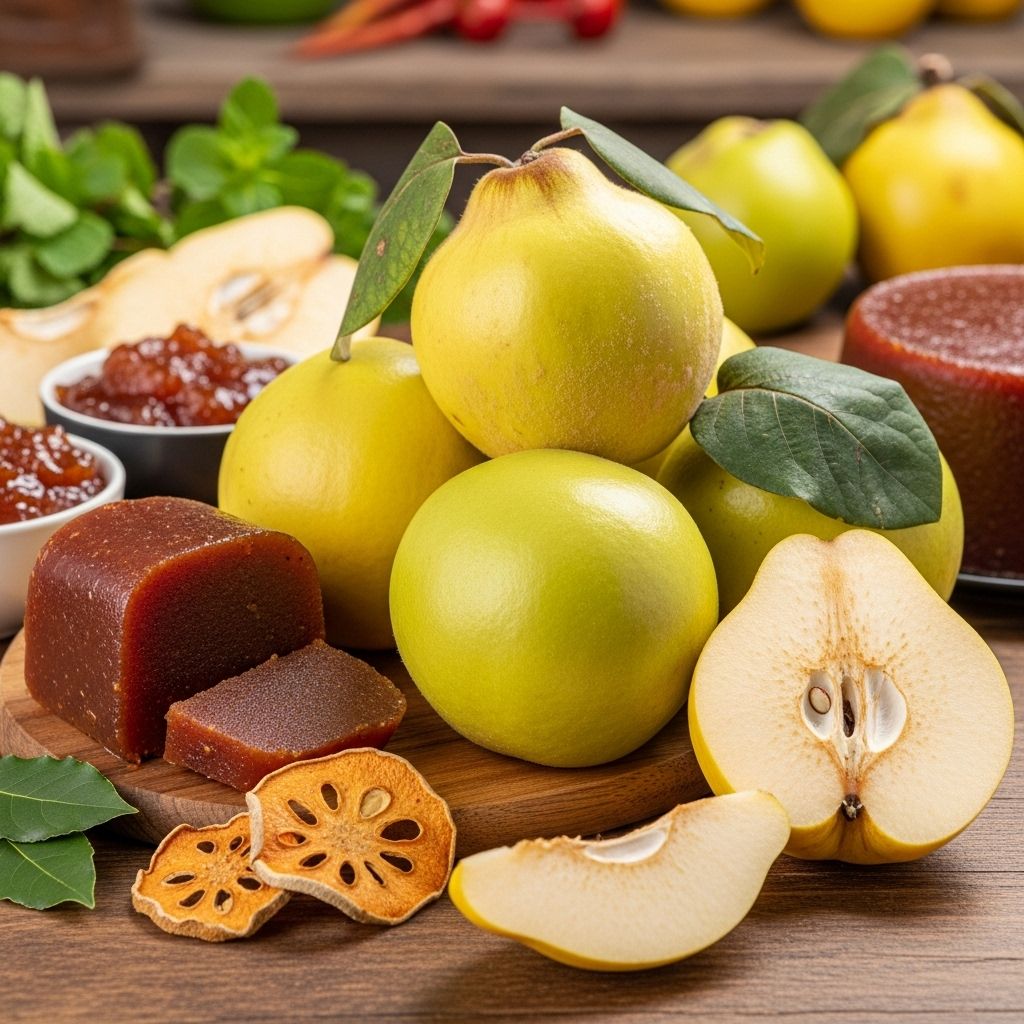
Quince (Cydonia oblonga) is a fragrant fruit revered for centuries in culinary and traditional medicine practices. Shaped similarly to a lumpy apple or pear, quince is recognized not only for its unique aroma and tart flavor but also for its impressive health benefits and versatility in both sweet and savory dishes. This article covers everything you need to know about quince fruit, from its nutritional value and health advantages to its uses, possible side effects, and frequently asked questions.
What Is Quince Fruit?
The quince fruit is native to regions of the Mediterranean and Southwest Asia. Botanically related to apples and pears, quince fruit belongs to the Rosaceae family. It typically grows on small, hardy deciduous trees that bloom with beautiful pinkish-white flowers in late spring. When ripe, quinces turn a vibrant golden-yellow and emit a distinct floral fragrance that once made them popular as natural air fresheners in antiquity.
- Appearance: Quinces are generally round or oblong with uneven, knobbly surfaces. Their skin may be covered in fuzz, especially before ripening, and the inner flesh is hard and pale white to yellowish.
- Texture & Taste: Raw quince is usually hard, gritty, and astringent, which makes it unpleasant to eat raw. However, cooking transforms the fruit, softening its flesh and turning it a beautiful pinkish hue with sweet, fragrant, and slightly tart flavors.
- Fragrance: The distinctive aroma of quince is often described as a blend of pear, pineapple, and citrus notes.
Nutritional Profile of Quince
Quince fruit is a nutritious, low-calorie fruit that offers an array of vitamins, minerals, and beneficial plant compounds. It is especially valued for its vitamin C content, fiber, and potent antioxidants.
| Nutrient | Amount (per 100g) |
|---|---|
| Calories | 57 kcal |
| Carbohydrates | 15.3 g |
| Fiber | 1.9 g |
| Protein | 0.4 g |
| Fat | 0.1 g |
| Vitamin C | 15 mg (25% DV) |
| Potassium | 197 mg |
| Copper | 0.13 mg |
| Iron | 0.7 mg |
In addition to these nutrients, quince contains small amounts of B vitamins, magnesium, and several polyphenolic compounds with antioxidant effects.
Health Benefits of Quince Fruit
Quince is celebrated for a variety of health-promoting properties, which can be attributed to its rich nutrient and phytochemical content:
- 1. Boosts Immunity
The high vitamin C content enhances immunity by supporting the production and function of white blood cells and protecting cells from oxidative stress. - 2. Aids Digestion
Quince is a good source of dietary fiber, especially pectin, which helps improve digestion, promote regular bowel movements, and nurture beneficial gut bacteria. - 3. Supports Heart Health
The fiber, potassium, and antioxidants in quince contribute to heart health by helping lower blood pressure, reducing cholesterol absorption, and combating inflammation. - 4. May Help Control Weight
Low in calories and fat, but high in fiber, quince promotes satiety and can support weight management when included as part of a balanced diet. - 5. Offers Antioxidant Protection
Quince is loaded with polyphenols and flavonoids, which neutralize harmful free radicals, thereby reducing the risk of chronic diseases such as cancer and diabetes. - 6. May Soothe Gastrointestinal Issues
Traditionally, quince extracts and jams have been used to relieve conditions like diarrhea, ulcers, and acid reflux due to their mucilaginous and anti-inflammatory properties. - 7. Promotes Healthy Skin
The vitamin C and antioxidants in quince support collagen formation and help maintain skin elasticity and youthful appearance.
Quince in Traditional Medicine
For centuries, quince has played an important role in both food and medicine. In traditional systems, quince seeds, pulp, and syrup have been used to treat various ailments:
- Digestive aid and anti-nausea remedy
- Soothing sore throats and coughs (quince syrup or jelly is often recommended)
- Anti-inflammatory agent for wounds and skin conditions
- Relief for constipation and gastrointestinal discomfort
Although many of these uses are supported by anecdotal evidence, ongoing research is exploring quince’s bioactive compounds for modern applications.
How to Eat and Use Quince
Unlike apples and pears, most quince varieties are not suitable for raw eating due to their hardness and astringent taste. Cooking is essential to unlock their flavor and texture.
- Poached or Stewed: Quince develops a lovely pink-red color when poached with sugar, cinnamon, and lemon.
- Quince Paste: In Spain, quince is famously made into membrillo, a sweet, jelly-like paste often paired with cheese.
- Jams, Jellies, and Marmalade: The natural pectin content makes quince ideal for preserves.
- Baked Desserts: Quince can be used in pies, tarts, crumbles, and cakes, often combined with apples or pears.
- Savory Dishes: It is popular in Middle Eastern and North African stews, tagines, and roasted with meats like lamb or poultry.
- Quince Syrup & Tea: Quince can be boiled to extract syrup for desserts or used in herbal infusions for medicinal properties.
How to Select and Store Quince
Follow these guidelines to get the most from your quince fruit:
- Choosing: Look for large, firm fruit with golden-yellow skin and a sweet, floral aroma. Avoid fruit with blemishes or soft spots.
- Ripening: If quince is picked slightly underripe, leave at room temperature until the skin turns a uniform yellow and emits a strong fragrance.
- Storing: Store ripe quince in a cool, dark place or refrigerated, loosely wrapped in paper towels to prevent bruising and limit the spread of its potent aroma to other foods. Handle quince gently, as it bruises easily.
Unripe fruit can continue ripening after harvest, and cooked quince can be refrigerated and enjoyed for several days.
How to Prepare Quince
Quince requires some preparation due to its firm texture:
- Wash and peel the skin, which can be fuzzy or tough.
- Cut into quarters and remove the core and seeds.
- Slice or chop as needed for recipes.
- Cook with water, sugar, or honey to soften and develop the sweet, floral flavor characteristic of quince.
Tip: The flesh oxidizes quickly, so immerse pieces in water with lemon juice if preparing in advance.
Potential Side Effects and Precautions
Quince is generally safe for most people when consumed in normal food amounts. However, note the following:
- Quince seeds contain amygdalin, which can release cyanide; avoid ingesting large quantities of seeds.
- Excess consumption of quince, especially in concentrated forms like syrup or paste, may cause digestive discomfort in sensitive individuals due to its high fiber content.
- Allergic reactions are rare but possible; discontinue use if symptoms such as itching, swelling, or difficulty breathing occur.
Consult a healthcare professional before using quince medicinally or if you have existing health concerns.
How to Grow Quince at Home
Quince trees can be cultivated in home gardens, especially in mild to temperate climates:
- Climate: Prefers locations with a cold winter for dormancy and warm summer for ripening.
- Soil: Thrives in well-draining, fertile soils with neutral to slightly acidic pH.
- Planting: Plant in a sunny, sheltered spot. Space trees adequately for air circulation.
- Care: Quince are self-fertile, requiring only one tree for fruit. Prune in late fall or winter to maintain shape and reduce disease.
- Harvest: Fruits are ready when skin turns yellow and easily detach from the branch. Handle gently, as fruits bruise easily.
- Pests & Diseases: Watch for fire blight, rust, and mildew. Good airflow and regular pruning minimize disease risk.
Quince vs. Apple and Pear: Comparison Table
| Property | Quince | Apple | Pear |
|---|---|---|---|
| Family | Rosaceae | Rosaceae | Rosaceae |
| Common Use | Usually cooked | Usually eaten raw | Usually eaten raw |
| Texture (raw) | Hard, astringent | Crisp, juicy | Soft to crisp, juicy |
| Main Nutritional Highlight | Vitamin C, fiber, antioxidants | Vitamin C, fiber | Fiber, potassium |
| Flavor (cooked) | Floral, sweet, tart | Sweet, mildly tart | Sweet, mild |
Frequently Asked Questions (FAQs)
Q: Can you eat quince raw?
A: While not toxic, quince is extremely hard and astringent when raw, making it unpleasant. Cooking is recommended for improved flavor and texture.
Q: What does cooked quince taste like?
A: Cooked quince develops a floral, sweet, and slightly tart flavor with mellow notes reminiscent of apples and pears and a pleasing pinkish color.
Q: What are the most popular uses for quince?
A: Quince is widely used in jams, jellies, pastes, baked goods, desserts, and as an ingredient in savory Middle Eastern and Mediterranean dishes. In Spain, ‘membrillo’ (quince paste) is a famous cheese accompaniment.
Q: Are there any risks to eating quince?
A: Quince is safe when eaten in typical food amounts. Avoid eating seeds, as they contain toxic compounds; allergies are rare but possible.
Q: How should quince be stored?
A: Keep ripe quinces in a cool, dark place or refrigerate them, and avoid stacking to limit bruising. Their aroma can penetrate other foods, so store separately.
Q: What makes quince turn pink when cooked?
A: The transformation is due to the breakdown of phenolic compounds and tannins during cooking, which triggers the development of anthocyanin pigments, resulting in the unique pink color.
Takeaway
Quince fruit stands out as a unique, fragrant, and nourishing fruit that offers culinary versatility and several health benefits. Whether used in traditional recipes, contemporary desserts, or as a functional food, quince continues to charm food lovers and health enthusiasts alike with its storied heritage and distinctive qualities.
References
- https://notfarfromthetree.org/fruit/quince/
- https://theveganatlas.com/a-guide-to-quince-buying-prepping-using-the-fragrant-fruit/
- https://www.growveg.com/plants/us-and-canada/how-to-grow-quince/
- https://www.finegardening.com/article/the-ultimate-guide-to-growing-quince-and-using-their-fruit
- https://learn.eartheasy.com/guides/a-beginners-guide-to-growing-quince/
- https://www.portlandfarmersmarket.org/quince-a-guide/
- https://foodprint.org/real-food/quinces/
- https://www.rhs.org.uk/fruit/quince/grow-your-own
- https://justfruitsandexotics.com/wp-content/uploads/JFE-Growing-Guide-Quince.pdf
Read full bio of Sneha Tete


